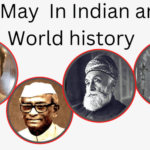MDS World Awareness Day is observed on October 25th each year. The day serves as an international platform to raise awareness about myelodysplastic syndromes (MDS), a group of rare blood disorders that can affect the production of healthy blood cells in the bone marrow. The aim of this day is to educate the public, healthcare professionals, and policymakers about MDS, its symptoms, diagnosis, and available treatment options.
During MDS World Awareness Day, various organizations, patient advocacy groups, and healthcare institutions organize events and initiatives to promote understanding and support for individuals living with MDS. These activities often include informational seminars, public lectures, and online campaigns to raise awareness and provide insights into the challenges faced by those affected by this condition.
What is myelodysplastic syndromes?
Myelodysplastic syndromes are a group of disorders caused by blood cells that are poorly formed or don’t work properly. Myelodysplastic syndromes result from something amiss in the spongy material inside your bones where blood cells are made (bone marrow).
Management of myelodysplastic syndromes is most often intended to slow the disease, ease symptoms and prevent complications. Common measures include blood transfusions and medications to boost blood cell production. In certain situations, a bone marrow transplant, also known as a stem cell transplant, may be recommended to replace your bone marrow with healthy bone marrow from a donor.
People with myelodysplastic syndromes might not experience signs and symptoms at first.
In time, myelodysplastic syndromes might cause:
- Fatigue
- Shortness of breath
- Unusual paleness (pallor), which occurs due to a low red blood cell count (anemia)
- Easy or unusual bruising or bleeding, which occurs due to a low blood platelet count (thrombocytopenia)
- Pinpoint-sized red spots just beneath the skin that are caused by bleeding (petechiae)
- Frequent infections, which occur due to a low white blood cell count (leukopenia)
Symptoms of MDS can vary depending on the type and severity of the disorder. Common signs and symptoms may include fatigue, weakness, frequent infections, easy bruising or bleeding, and shortness of breath. Treatment for MDS aims to improve blood cell counts, manage symptoms, and prevent complications. Treatment options may include blood transfusions, medications to stimulate blood cell production, chemotherapy, and stem cell transplantation for eligible patients.
Since MDS is a complex group of disorders, individuals diagnosed with MDS often require specialized care and close monitoring by a healthcare team, including hematologists and oncologists, to manage the condition and improve their quality of life. Early detection and appropriate medical intervention are crucial for managing the symptoms and complications associated with MDS.
The World Health Organization divides myelodysplastic syndromes into subtypes based on the type of blood cells — red cells, white cells and platelets — involved.
Myelodysplastic syndrome subtypes include:
- Myelodysplastic syndromes with single-lineage dysplasia.One blood cell type — white blood cells, red blood cells or platelets — is low in number and appears abnormal under the microscope.
- Myelodysplastic syndromes with multilineage dysplasia.In this subtype, two or three blood cell types are abnormal.
- Myelodysplastic syndromes with ring sideroblasts.This subtype involves a low number of one or more blood cell types. A characteristic feature is that existing red blood cells in the bone marrow contain rings of excess iron.
- Myelodysplastic syndromes with isolated del(5q) chromosome abnormality.People with this subtype have low numbers of red blood cells, and the cells have a specific mutation in their DNA.
- Myelodysplastic syndromes with excess blasts.In this subtype, any of the three types of blood cells — red blood cells, white blood cells or platelets — might be low and appear abnormal under a microscope. Very immature blood cells (blasts) are found in the blood and bone marrow.
- Myelodysplastic syndromes, are unclassifiable.In this subtype, there are reduced numbers of one or more types of mature blood cells and the cells might look abnormal under the microscope. Sometimes the blood cells appear normal, but analysis might find that the cells have DNA changes that are associated with myelodysplastic syndromes.
History of MDS World Awareness Day
MDS World Awareness Day was initiated by the MDS Foundation, a global organization dedicated to providing information, support, and resources for individuals affected by myelodysplastic syndromes (MDS) and related disorders. The inaugural observance of MDS World Awareness Day took place on October 25th, 2009, marking the beginning of an annual event aimed at raising global awareness about MDS.
The establishment of this awareness day was driven by the need to educate the public, healthcare professionals, and policymakers about the challenges faced by individuals living with MDS and the importance of early detection and appropriate management of the condition. The MDS Foundation, along with other patient advocacy groups and healthcare organizations, played a significant role in promoting the observance of this day and encouraging communities worldwide to participate in awareness-raising activities and initiatives.
Over the years, MDS World Awareness Day has gained international recognition, with various institutions, healthcare facilities, and patient advocacy groups organizing educational events, informational campaigns, and fundraising activities to support individuals affected by MDS. The day has also helped to foster a sense of community among individuals living with MDS, providing them with a platform to share their experiences, access support, and advocate for better treatment options and care.
Through its continued observance, MDS World Awareness Day continues to play a crucial role in promoting early detection, advancing research efforts, and advocating for improved healthcare services and support systems for individuals living with MDS and their families.
Theme of MDS World Awareness Day 2023
Every year on October 25, the MDS Alliance and its member groups around the world come together to raise awareness of Myelodysplastic Syndromes (MDS) – a type of rare blood cancer where the bone marrow does not produce enough healthy blood cells. There is no specific theme.
Significance of MDS World Awareness Day
MDS World Awareness Day holds significant importance in raising global awareness and understanding of myelodysplastic syndromes (MDS) and related disorders. Some of the key significances of this day include:
- Educational Awareness: The day serves as a platform to educate the public, healthcare professionals, and policymakers about the symptoms, diagnosis, and treatment options for MDS, fostering a better understanding of this complex group of blood disorders.
- Support and Community Building: MDS World Awareness Day provides a sense of community and support for individuals and families affected by MDS, offering them an opportunity to share their experiences, access resources, and connect with others facing similar challenges.
- Advocacy for Research: By highlighting the need for ongoing research and advancements in the field, the day advocates for increased efforts to develop better treatment options, enhance patient care, and improve the overall quality of life for individuals living with MDS.
- Early Detection and Diagnosis: Emphasizing the importance of early detection, the day encourages individuals to be aware of the signs and symptoms of MDS, promoting timely medical intervention and appropriate management strategies for those affected.
- Reducing Stigma: MDS World Awareness Day contributes to reducing the stigma associated with MDS and related disorders, promoting a more inclusive and supportive environment for individuals living with these conditions and their families.
- Promotion of Support Services: The day highlights the availability of support services, resources, and advocacy organizations dedicated to assisting individuals and families affected by MDS, encouraging access to vital support networks and information.
Through these significant aspects, MDS World Awareness Day plays a critical role in advocating for improved awareness, support, and treatment options for individuals living with MDS, contributing to a better quality of life and increased well-being for those affected by these challenging blood disorders.
How to Observe MDS World Awareness Day
Observing MDS World Awareness Day can involve a range of activities and initiatives aimed at raising awareness, providing support, and advocating for individuals affected by myelodysplastic syndromes (MDS). Here are some meaningful ways to observe the day:
- Educational Campaigns: Organize educational events, webinars, or seminars to disseminate information about MDS, its symptoms, and available treatment options. Invite healthcare professionals and specialists to provide insights and answer questions from the community.
- Community Support Groups: Facilitate support group meetings or online forums for individuals and families affected by MDS, providing a safe space for sharing experiences, discussing challenges, and offering emotional support.
- Social Media Engagement: Launch a social media campaign using dedicated hashtags to raise awareness about MDS. Share informational posts, personal stories, and messages of support to reach a broader audience and encourage engagement from the community.
- Fundraising Initiatives: Organize fundraising activities or donation drives to support MDS research, treatment facilities, and patient support programs. Partner with local organizations or charities to maximize the impact of fundraising efforts.
- Information Dissemination: Distribute informational brochures, flyers, and online resources to healthcare facilities, community centers, and educational institutions to raise awareness about MDS and provide access to valuable support resources.
- Advocacy Efforts: Engage in advocacy initiatives to promote policies that support the rights and well-being of individuals living with MDS. Collaborate with local representatives and policymakers to advocate for improved healthcare services and access to specialized care.
- Personal Reflection and Support: Encourage individuals to share their stories and experiences with MDS on various platforms, highlighting the importance of support, resilience, and solidarity within the community.
By actively participating in these initiatives, individuals and communities can contribute to a greater understanding of MDS, provide valuable support for those affected by the condition, and advocate for improved healthcare services and research efforts aimed at enhancing the treatment and management of MDS.
Tags: History of MDS World Awareness Day, How to Observe MDS World Awareness Day what is MDS World Awareness Day, MDS World Awareness Day, Significance of MDS World Awareness Day, Theme of MDS World Awareness Day 2023











